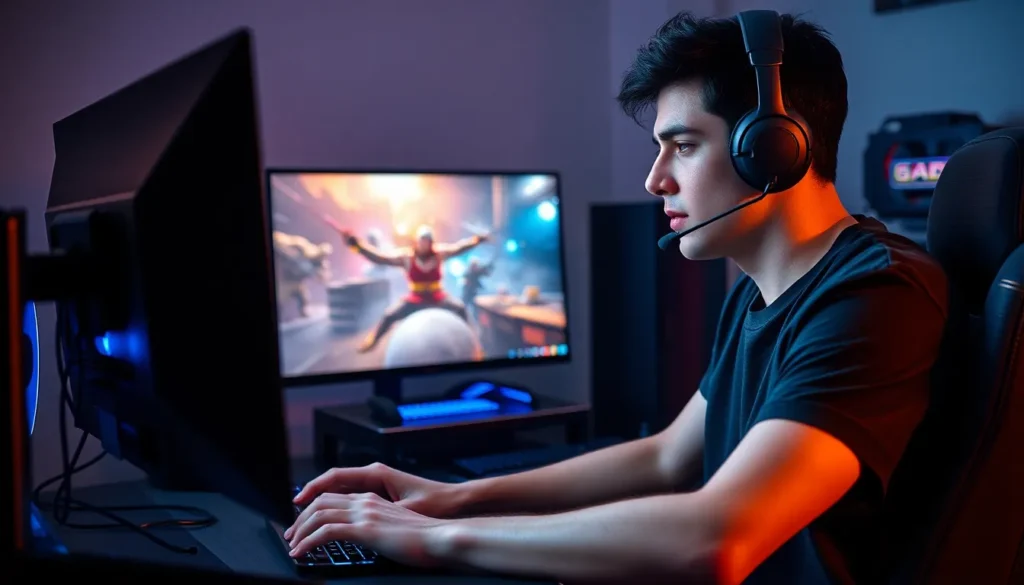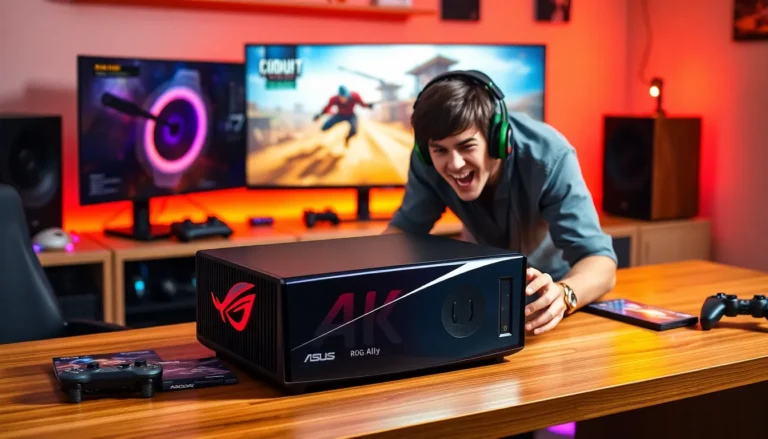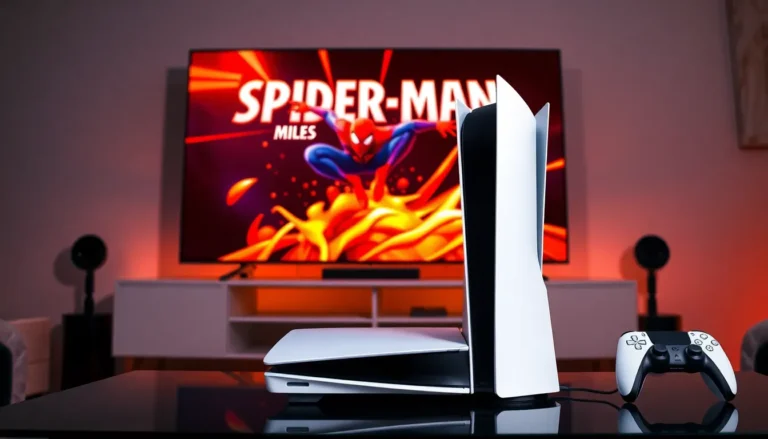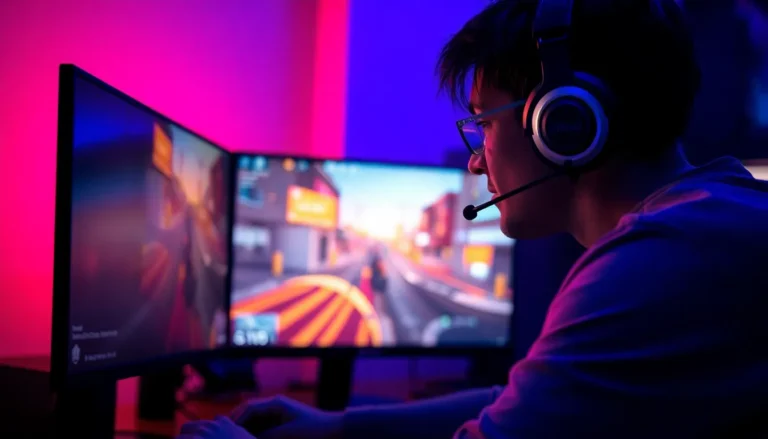Picture this: you’re in the heat of battle, finger poised over the trigger, and then—bam! Your frame rate drops faster than a lead balloon. FPS lag can turn epic gaming moments into frustrating slogs, leaving players feeling like they’re stuck in quicksand. It’s enough to make anyone want to throw their controller out the window.
Table of Contents
ToggleUnderstanding FPS Lag
FPS lag significantly impacts gaming experiences, leading to distorted visuals and reaction delays. Players often find themselves frustrated as gameplay suffers during critical moments.
What Is FPS Lag?
FPS lag refers to a noticeable decrease in frames per second during gameplay. This drop results in choppy visuals and input delays, causing players to miss crucial moves. Games typically run at a smooth frame rate, aiming for 30 to 60 FPS or higher. When performance dips, it disrupts immersion and makes gaming less enjoyable.
Common Causes of FPS Lag
Several factors contribute to FPS lag. Hardware limitations often stand out, where outdated graphics cards or insufficient RAM can’t handle demanding games. Game settings play a role; high-resolution textures and complex effects require significant processing power. Background applications that consume system resources can further hinder performance. Network issues may also affect online gaming experiences, leading to lag spikes that disrupt gameplay.
Quick Fixes for FPS Lag
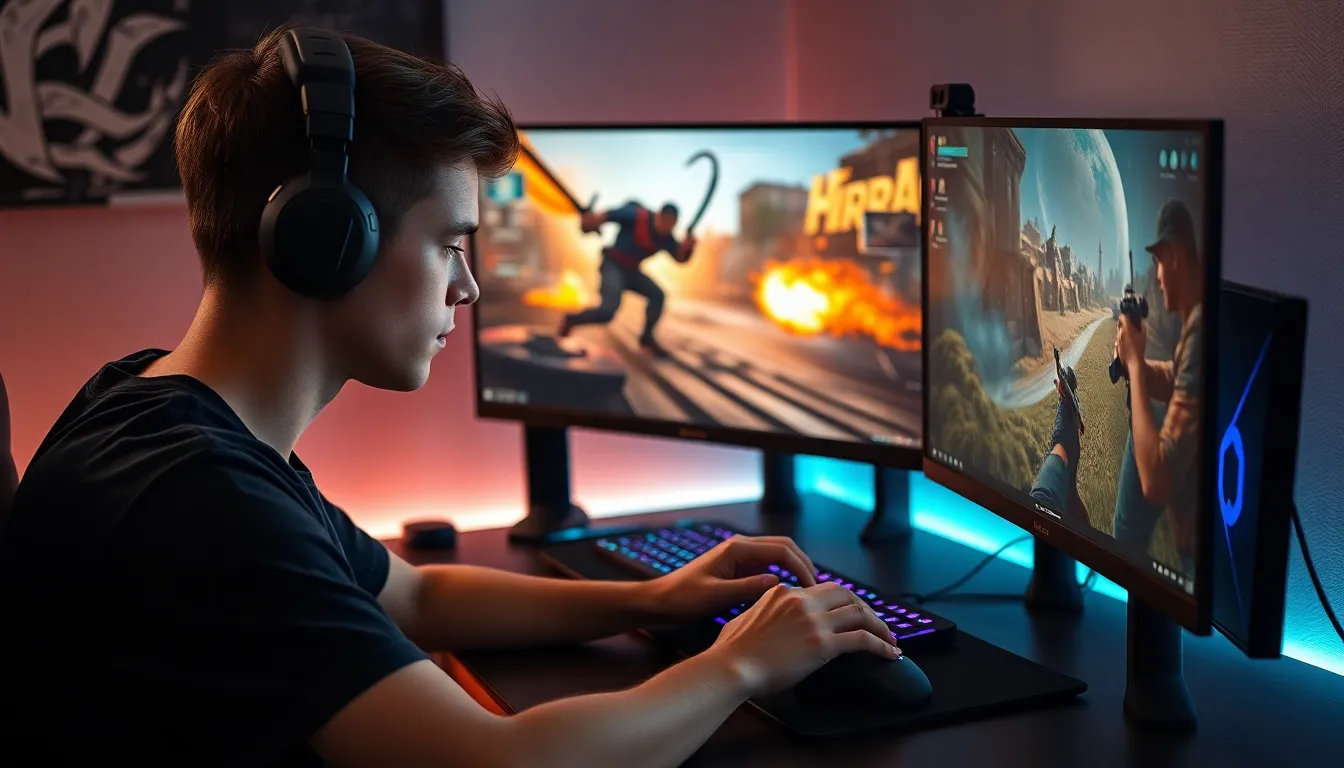
Lagging frames can disrupt gameplay. Several quick fixes exist that can enhance performance.
Adjusting In-Game Settings
Tweak the graphics settings within the game for immediate improvements. Reducing the resolution often helps players gain smoother gameplay. Lowering texture quality and effects like shadows or anti-aliasing can significantly enhance FPS levels. Disable V-Sync to eliminate input lag, allowing faster reaction times. Striking a balance between visual quality and performance ensures an optimal gaming experience. Moreover, enabling the fullscreen mode instead of windowed mode can enhance frame rates in many cases.
Updating Drivers
Ensure that graphic drivers remain up to date for optimal performance. Manufacturers release updates that can improve compatibility and performance with new games. Visit the GPU manufacturer’s website or use built-in update tools to check for the latest versions. Moreover, outdated drivers can contribute to FPS lag, so regular checks can prevent unnecessary slowdowns. Keeping the operating system updated also supports better performance overall, ensuring all software runs smoothly alongside the games.
Advanced Solutions for FPS Lag
Advanced solutions exist for addressing FPS lag, providing gamers with options to enhance their experience significantly.
Overclocking Your GPU
Overclocking the GPU increases the clock speed beyond its default settings, which can boost performance and frame rates. This process often involves using tools like MSI Afterburner to adjust settings safely. Gamers see improved performance in demanding titles when they push their GPU to its limits. Increased caution is necessary, as overheating can damage components without proper cooling. Monitoring temperatures while playing helps maintain hardware integrity. Applying these strategies can effectively reduce FPS lag during gaming sessions.
Upgrading Hardware
Upgrading hardware is another effective way to combat FPS lag. Players can enhance performance by investing in a more powerful graphics card or increasing RAM capacity. Upgrading to at least 16 GB of RAM can reduce bottlenecks in resource-intensive games. SSDs also provide faster load times compared to traditional HDDs, improving the overall gaming experience. Choosing hardware compatible with your system ensures optimal performance. Making these upgrades addresses underlying issues causing FPS lag, resulting in smoother gameplay.
Monitoring Performance
Maintaining optimal performance is crucial for minimizing FPS lag. Monitoring systems effectively helps players identify performance issues.
Using Benchmarking Tools
Benchmarking tools measure a system’s performance under specific game settings. Players might use software like Fraps, MSI Afterburner, or 3DMark to analyze frame rates and ensure they meet the desired benchmarks. Data from these tools provides insight into whether the system runs efficiently or encounters bottlenecks. Adjusting settings based on benchmarking feedback can lead to improved in-game performance. Consistent monitoring allows players to spot trends and adjust strategies accordingly.
Analyzing Game Settings
Game settings directly affect frame rates. Reducing the resolution often yields immediate benefits, enhancing overall performance. Players should prioritize settings such as texture quality and anti-aliasing, as higher options demand more processing power. Lowering shadows and effects significantly reduces CPU and GPU load. Additionally, experimenting with different graphical presets can reveal the most effective configuration. Regularly checking these settings ensures players maintain optimal performance and maximize gaming experiences.
Addressing FPS lag is crucial for an enjoyable gaming experience. By implementing both quick fixes and advanced solutions players can significantly enhance their performance. Adjusting in-game settings and keeping drivers up to date creates a solid foundation for smoother gameplay.
For those willing to invest further upgrading hardware or overclocking the GPU can yield impressive results. Regular monitoring of system performance ensures that players stay ahead of potential issues.
With the right strategies in place gamers can minimize lag and fully immerse themselves in their favorite titles. Enjoying seamless gameplay not only boosts performance but also elevates the overall gaming experience.

